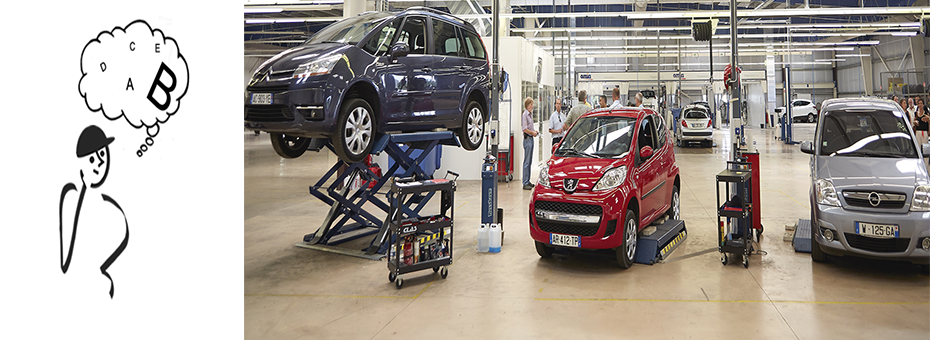Lean is above a learning system—and within this system the mission of the CEO is to create the conditions enabling learning for all people. This translates into daily reflection by the CEO, mainly on the gemba, to ask themself: “what (and how) do we have to learn?”
But who helps the CEO with their own learning? Sure, most CEOs went to the best business schools and were taught everything there is to know about business…Or at least some seem to think so and believe that, as a CEO, your job is to make the right calls and execute them fully. No need of, or indeed space for, learning.
I’ve learned however that smarter CEOs have mentors. Or, they share tips and stories with their peers. Unfortunately, this often turns into performance measuring contests (one does not hire CEOs for egolessness). They also have a board to learn from, but this tends to be used mainly for control and reporting.
How else can the CEO learn?
The lean system, with the TPS, will help them learn and bring everyone else on board as well. With them they will learn-by-doing at the workplace.
Looking into kaizen experiments is always very educational, but there are other things to experiment with.
First, as extensively described in The Lean Sensei, the CEO can have a sensei with whom they will work on the gemba one day every month. The sensei will teach them how to see the waste, help them challenge the strategy of the company from gemba observations and of course teach them the TPS system.
Then, armed with a basic knowledge of TPS, the CEO can visit other gembas, in other companies. My sensei suggested that I to go a different gemba once a month. And I learned that spending half a day, or a day, with another CEO on the gemba, just to observe and ask questions is excellent training. As this is not a business you know by heart like yours, it pushes you to be methodical in the observation and to understand the business and the problems. Because you’re not the boss there, it is easier to talk with the people (although you may not be heard as easily). Driving people to change their mind in this situation is very different than in your own company!
It was on the gemba of another company that I realized the difference between unconscious and conscious competence. I was in a factory, and the boss explained to me how pull flow helped them to get a huge competitive advantage. While he was explaining that I was just watching and trying to understand what happened on the floor shop. And then I realized that the flow was pushed—not pulled! But I was totally unable to explain it to the CEO. Pull flow was not clear enough for me to be able to explain what I saw: I had to go further in my understanding and learning of pull flow.
To deepen their understanding, the CEO can also attend master classes and/or Lean Summits: listening from other experiences is often a way to better understand things that we did not fully understand the first time. I try to go to this kind of event once a year, and to bring one executive-level person with me to share this experience, and discuss how this applies in house. For example, we have struggled for a long time with our IT development flow: Kanban or not Kanban? What interactions between product owners and engineers are best? How to manage the flow? Of course a great deal of theory about this is available in books. But I really understood the specific thing that would help the team take a step forward when I saw the presentation of a tech company CTO in a Lean Summit. It helped us to better understand what we had to test to better learn how to improve this flow.
Reading is another great way: in the lean community there are so many things written about all the situations you can experience in your CEO life! But you will need help, from your sensei, other CEOs or your Kaizen Office, to select the right books. My sensei and I exchange books about lean to read all the time—and about business and society in general, as well as about lean.
Finally, you have to formalize and transmit your new knowledge. Writing and sharing the experience through conferences will consolidate all your learnings as it will help to take a step back and better understand what you’ve learnt.
At the end this process is a “learn the theory/experience/write & transmit” process: probably the best way to learn!




Good summary to open the mind and train the eyes of each Manager not only CEO’s.
You can only learn if you are trained to ask the right questions and to be able to ask the right questions you need to have the eyes for waste, which is the basic for everything.